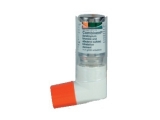Importance of micromeritics in pharmacy terms and concepts
In the field of pharmacy, understanding the principles of micromeritics is of utmost importance. Micromeritics refers to the science and technology of small particles and their behavior. This discipline plays a crucial role in various aspects of pharmaceutical development, including drug formulation, production, and delivery. By studying the key terms and concepts in micromeritics, professionals in the pharmacy industry gain valuable insights into the properties and characteristics of particles, enabling them to make informed decisions that ultimately impact patient health and well-being.
One fundamental concept in micromeritics is particle size analysis. Determining the size distribution of particles is essential for predicting their behavior in a formulation and understanding their interactions with biological systems. Techniques such as laser diffraction and sedimentation are commonly used to measure particle size, allowing pharmacists and researchers to optimize drug delivery systems and ensure consistent drug performance.
Surface area is another crucial parameter in micromeritics. The surface area of particles greatly affects their dissolution rate and drug release profile, as it determines the contact area between the drug and its surroundings. By utilizing methods such as the Brunauer-Emmett-Teller (BET) technique, which measures the adsorption of gas molecules on a solid surface, pharmaceutical scientists can precisely quantify the surface area of particles. This information helps in formulating drugs with enhanced solubility and bioavailability.
Pore size distribution is an equally important concept in micromeritics, especially in the context of porous materials. Pores, which are empty spaces within particles or between particles, can significantly impact the drug release from dosage forms. Understanding the distribution of pore sizes allows researchers to design drug delivery systems with desired release profiles. Techniques such as mercury intrusion porosimetry and nitrogen adsorption are employed to measure the pore size distribution, enabling precise control over drug release kinetics.
Importance of Particle Size Analysis
Particle size analysis plays a crucial role in various industries, including pharmaceuticals. The size of particles can greatly impact the effectiveness and stability of a drug product. It is important to understand and control the particle size distribution to ensure consistent and predictable performance.
Optimizing drug delivery: Particle size analysis helps in optimizing the drug delivery systems. The size of particles can affect their absorption, distribution, and metabolism in the body. By studying the particle size distribution, researchers can design drug formulations that can be efficiently absorbed and reach the target site of action.
Influence on dissolution rate: The dissolution rate of a drug is influenced by its particle size. Smaller particles have a larger surface area, which increases the rate at which the drug dissolves. This can have a significant impact on the bioavailability and therapeutic efficacy of the drug.
Quality control: Particle size analysis is an important tool for quality control in the pharmaceutical industry. By monitoring the particle size distribution, manufacturers can ensure that their products meet the required specifications. Any deviation in particle size can affect the drug's performance and may lead to inconsistent results.
Stability and shelf-life: The particle size of pharmaceutical products can also affect their stability and shelf-life. Small particles tend to agglomerate or adsorb moisture, which can lead to changes in the drug's physical and chemical properties. By analyzing the particle size, manufacturers can make necessary adjustments to enhance the stability and prolong the shelf-life of their products.
Compatibility with excipients: Particle size analysis is essential for understanding the compatibility between drug particles and excipients used in formulation. Different particle sizes may interact differently with excipients, affecting the overall stability and performance of the drug product. By analyzing the particle size, researchers can select appropriate excipients and optimize the formulation process.
Regulatory compliance: Particle size analysis is a requirement in pharmaceutical manufacturing to ensure regulatory compliance. Regulatory authorities set specific guidelines for the particle size distribution of drug products. Compliance with these guidelines is important for the safety, efficacy, and consistency of the drug. Particle size analysis helps manufacturers demonstrate compliance with these regulations.
Characterization Techniques
1. Particle size analysis
Particle size analysis is an important characterization technique used in pharmacy to determine the size distribution of particles in a sample. This information is crucial for understanding the behavior and properties of pharmaceutical powders and formulations. Various methods can be used to analyze particle size, including laser diffraction, sedimentation, and microscopy.
2. Surface area measurement
Surface area measurement is another characterization technique commonly used in pharmacy. It quantifies the total surface area of particles in a sample, which is important for assessing dissolution rates, drug release, and stability of pharmaceutical formulations. Techniques such as gas adsorption and BET analysis are typically employed to determine surface area.
3. Porosity analysis
Porosity analysis is a characterization technique that measures the void space or pore volume within a solid material. In pharmacy, porosity analysis is valuable for evaluating the permeability, adsorption capacity, and drug loading of porous materials such as tablets and capsules. Techniques like mercury intrusion porosimetry and nitrogen adsorption are commonly used for porosity analysis.
4. Surface morphology imaging
Surface morphology imaging is a characterization technique used to visualize the surface features and topography of pharmaceutical particles and materials. techniques like Scanning Electron Microscopy (SEM) and Atomic Force Microscopy (AFM) are commonly used for surface morphology imaging in pharmacy.
- 5. Rheological analysis
- Rheological analysis is a characterization technique used to study the flow behavior and viscosity of pharmaceutical formulations. It helps in understanding the suitability of formulations for manufacturing processes and administration routes. Techniques like viscometry and rheometry are used for rheological analysis.
Solid Dosage Forms and Micromeritics
When it comes to solid dosage forms in pharmacy, micromeritics plays a crucial role in ensuring the quality and effectiveness of these formulations. Micromeritics refers to the study of small particle size, shape, and surface properties, which are important factors to consider in the formulation and manufacturing of solid dosage forms.
Particle size distribution is one of the key concepts in micromeritics. It refers to the range of particle sizes present in a solid dosage form, which can greatly influence its dissolution rate, bioavailability, and stability. A narrow particle size distribution is often desired to ensure uniformity and reproducibility of the dosage form.
Particle shape is another important aspect to consider. The shape of particles can affect their flowability, compressibility, and packing ability, which in turn can impact the drug release rate and overall performance of the solid dosage form. Different particle shapes, such as spherical, angular, or irregular, can be achieved through various manufacturing processes.
Surface area is also a critical parameter in micromeritics. It is directly related to the dissolution rate and bioavailability of the drug in the dosage form. A larger surface area can lead to faster drug release, while a smaller surface area may result in slower or incomplete dissolution. Therefore, controlling the surface area of the drug particles is essential for achieving the desired therapeutic effect.
One of the commonly used techniques in micromeritics is particle size analysis, which allows for the determination of particle size distribution. This can be done using different methods such as sieving, laser diffraction, or microscopy. These techniques provide valuable information for formulators to optimize the solid dosage form and ensure its performance and quality.
In conclusion, micromeritics is a crucial aspect in the formulation and manufacturing of solid dosage forms in pharmacy. Understanding and controlling factors such as particle size, shape, and surface area can greatly influence the drug release and bioavailability of the dosage form. This knowledge helps in developing effective and safe medications for patients.
Quality Control Implications
Quality control is an essential aspect of the pharmaceutical industry, ensuring that medications meet the required standards for safety and efficacy. Micromeritics plays a crucial role in quality control, as it provides valuable information about the physical and chemical properties of pharmaceutical powders and particles.
Particle size distribution: Micromeritics analysis allows for the determination of particle size distribution in pharmaceutical powders. This information is vital for quality control purposes, as particle size can greatly impact the drug's dissolution rate, bioavailability, and stability. By measuring and monitoring the particle size distribution, manufacturers can ensure consistent product performance and optimize drug formulation.
Surface area: Micromeritics also provides information about the specific surface area of pharmaceutical powders. Surface area plays a critical role in drug dissolution and formulation, as it affects the drug's rate of release and interaction with other components. Quality control measures can utilize micromeritics analysis to ensure that the surface area of pharmaceutical powders remains within the desired range, ensuring optimal drug performance.
Porosity: Porosity is another important parameter in pharmaceutical quality control. Micromeritics analysis can determine the porosity of powders, which affects drug flowability, stability, and packaging considerations. By monitoring the porosity of pharmaceutical powders, manufacturers can ensure consistent product quality and prevent issues such as caking or poor dissolution.
Uniformity: Micromeritics analysis also helps ensure the uniformity of pharmaceutical powders. By measuring parameters such as particle size distribution and surface area, manufacturers can identify any inconsistencies in the product and take corrective measures. This ensures that each dose of medication contains the intended amount of active ingredient, enhancing patient safety and drug effectiveness.
Overall, micromeritics analysis plays a crucial role in quality control in the pharmaceutical industry. By providing valuable information about particle size distribution, surface area, porosity, and uniformity, micromeritics helps ensure consistent product performance, safety, and efficacy.
Future Perspectives
In the future, micromeritics is expected to play a crucial role in the development of new pharmaceutical formulations. With advancements in technology and an increasing demand for personalized medicine, the field of micromeritics is likely to expand and evolve.
One of the future perspectives is the use of nanotechnology in drug delivery systems. Nanoparticles have unique properties that can improve drug solubility and stability, enhance bioavailability, and target specific cells or tissues. The ability to precisely control the particle size and shape will allow for the development of optimized drug formulations with improved therapeutic efficacy.
Another promising area of research is the use of micromeritics in the design and development of 3D-printed pharmaceuticals. By precisely controlling the particle size and distribution, it will be possible to create complex drug structures with tailored release profiles. This has the potential to revolutionize drug manufacturing and enable the production of personalized medicines on demand.
Furthermore, micromeritics can contribute to the field of drug discovery by optimizing the physical and chemical properties of new drug candidates. Through the understanding of particle size, surface area, porosity, and other parameters, researchers can design more effective and stable drug formulations, reducing the development time and cost.
Overall, the future of micromeritics in pharmacy looks promising, with potential applications in nanomedicine, 3D printing, and drug discovery. Further research and development in this field will continue to drive innovation and improve patient outcomes through the development of more efficient and targeted drug formulations.
Follow us on Twitter @Pharmaceuticals #Pharmacy
Subscribe on YouTube @PharmaceuticalsYouTube





Be the first to comment on "Importance of micromeritics in pharmacy terms and concepts"